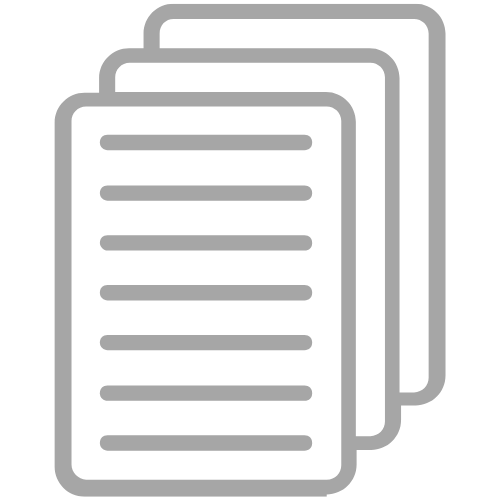Here's a mind-blowing stat for you: in 2020, there were over 300 billion emails sent…per day! That's around 3.5 million every second.
Now, a lot of those emails are junk (as I'm sure we're all painfully aware of at this point). But, of the billions of daily emails, plenty of them are important — and some are downright critical.
Many pivotal opportunities have been won — and lost — over email. That's because email is the primary communication channel of the professional world. And, as such, it's highly advisable to take email etiquette seriously, as it can have a significant impact on your career.
An email’s subject and body get most of the attention. But, occasionally, it’s how to close an email that puts the sender at a loss for words. Or, even worse, they disregard the closing entirely.
So, in this article, we'll be exploring how to close an email by examining 25 examples of professional email sign-offs.
But, before we get into those…
Why Is It Important To Close An Email Professionally?
Although a professional email sign-off is only a few words, it’s an integral component that can really throw off the overall tone of your email if done poorly. As with verbal communication, it’s not just what you say, but how you say it.
To demonstrate, put yourself in the recipient’s shoes for a second and imagine this: you’re a hiring manager at a tech startup. One morning, you receive an email from a candidate you interviewed the day before.
The email starts off totally normal, with “Hi [Name],” followed by a note explaining how excited they are about the opportunity. You get to the last line, which reads, “If there’s anything else I can provide from my end, don’t hesitate to ask.”
Then…it just goes blank. There’s nothing after the last line. No “Best Regards,” No name — just empty space. It would be weird, wouldn’t it? It might even come across a tad rude…and that’s the last thing the job-seeker would want to convey.
Or, how about this: instead of empty space, the candidate signs off with the word, ‘Ciao!’ While this might be a bit better than nothing at all, it still gives off a very unprofessional vibe.
These hypotheticals may seem over the top. After all, who would do that? (You’d be surprised.) But the key takeaway here is that those last few words at the end of your email matter. And, since they matter, you should be mindful of the words you’re choosing.
So, we’ve discussed the ‘why’ — now, let’s talk about how to close an email professionally…
Concluding The Email Body
Before we get into the appropriate sign-off terms to use, let’s first discuss how to wrap up the body of your email. Generally speaking, the last sentence of your email should contain some sort of conclusory remark. Otherwise, the reader will be ‘left hanging’ and your email will seem rushed, curt, or incomplete.
As a rule of thumb, it’s advisable to use a call-to-action (CTA) when concluding your email body. A CTA is a statement that sets the expectation for what’s to be done next. By including this, you eliminate any loose ends by clearly defining the next step(s).
A CTA can be directed at the recipient (if you’re expecting them to take action) or yourself (if you intend to follow up on the email with an additional action). For example, if you’re expecting/hoping to hear back from the recipient, you could say something like, “I look forward to hearing your input.” Conversely, if you intend to follow up with an additional action, you could say something like, “I’ll get to work on this and let you know if I have any questions.”
With that in mind, let’s list out some common conclusory CTA’s that you can use in various contexts…
Recipient-Directed CTA Examples
- “Thanks so much, I look forward to hearing from you.”
- Thanks so much, I look forward to your response.”
- “If you could please advise, that would be greatly appreciated.”
- “If you could let me know by [Date], that would be greatly appreciated.”
- “Is this something you’d be able to help with? If so, please let me know.”
Self-Directed CTA Examples
- “I’ll get to work on this shortly and let you know if I have any questions.”
- “I’ll start working on this ASAP and I’ll be sure to reach out if any issues arise.”
- “I’ll review and get back to you shortly.”
- “If there’s anything else I can do to help, please don’t hesitate to reach out.”
And, once you’ve concluded the body of your email, the next step is to close it out with an email sign-off…
25 Examples Of How To Close An Email
You’ve selected an appropriate headline, you’ve meticulously crafted the email body…now there’s only one piece left: the closing. Using the right sign-off term/phrase will be the cherry on top of your otherwise perfect email. But, on the other hand, an eccentric or incongruent sign-off can end your email on an odd note.
That being said, if you’re unsure how to close an email, you’ve come to the right place! Here are 25 widely-accepted ways to sign off an email (along with when to use each):
Universal
We’ll start with the universal sign-offs since, as the name suggests, they’re essentially universal. In other words, these sign-offs are very common, extremely flexible, and can be used at the end of virtually any message. If you’re ever in doubt, these are almost always safe bets.
- Best,
- Best Regards,
- Kind Regards,
- Regards,
Appreciative
Another popular option is the appreciative sign-off, which ends on a note of gratitude. These are particularly applicable when the recipient has helped you in some way or if you’re making a request. Be careful with the punctuation mark after a ‘thank you’; accidentally including a period instead of a comma (or exclamation) can make it read curtly.
- Thanks,
- Thank You,
- Many Thanks,
- Thanks so much,
- Thanks in advance,
Traditional/Formal
Long before email, we had written letters — which date back to a time when people spoke more formally. And, although we’ve come a long way since then, many of the traditional sign-off conventions have stuck around. So, if the context is on the formal side (or if that’s just your style), consider going with one of these…
- Sincerely,
- Kindly,
- Respectfully,
- Best Wishes,
- All the best,
- Warm Regards,
- Warmly,
- Yours,
Familiar/Casual
It’s common to have certain people (boss, coworkers, etc.) you email back-and-forth with so often that it feels more like a text message conversation. In that case, the email etiquette often becomes more lax and the formalities are dropped. But, nevertheless, a casual sign-off can still add a friendly touch.
- Thx,
- Cheers,
- Chat soon,
- -[first initial]
- ~[first initial]
- -[first name]
- Talk soon,
- Take care,
Now that we’ve reviewed how to close an email from a general standpoint, let’s take a closer look at some specific scenarios…
How to close an email to a professor
The world of high-level academia tends to be relatively formal — especially when you’re dealing with long-standing, prestigious institutions. For that reason, you might want to consider using one of the traditional/formal sign-offs listed above. Alternatively, a universal sign-off could be fitting as well.
How to close an email to a potential employer
When you’re emailing a prospective employer, you’ll probably want to opt for either a universal or appreciative sign-off — and the choice between the two will depend on how your email ends. If you’ve already said ‘thank you’ in the last line of the email (e.g. ‘Thanks so much for your consideration and I look forward to hearing from you.’), then you’ll want to conclude with a universal sign-off. If not, then an appreciative sign-off is likely in order.
More Email Tips…
We’ve now explored the ins and outs of how to close an email, but there’s plenty more to be said on the subject!
At Cultivated Culture, my mission is to help people land their dream job — and part of that equation involves effective emailing. So, if you’re in the market for a new job, be sure to check out the following resources for tips on…
- How To Write a Follow-Up Email
- How To Follow Up On A Job Application
- The Most Effective Post-Interview Thank You Email
And, finally, to learn my unconventional strategy for landing great jobs without applying online, check out my ultimate guides on Value Validation Projects and How To Get A Job Anywhere Without Applying Online!



























